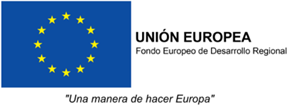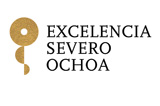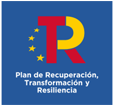Shared learning between two giants of cardiovascular research
Mount Sinai Heart is one of the best cardiology centers in the world; indeed the institute’s website proudly declares its position as 10th ranking cardiology center in the USA.
Mount Sinai Heart is one of the best cardiology centers in the world; indeed the institute’s website proudly declares its position as 10th ranking cardiology center in the USA. Here in Spain we’re not so keen on rankings, but without doubt the Centro Nacional de Investigaciones Cardiovasculares (CNIC) is one of the leading centers in cardiovascular research, both nationally and in Europe.
More than 5000 kilometers separate these two institutions, but they are united through a partnership program established by CNIC ”General Director” Valentin Fuster when he took charge of the Spanish center, combining this role with his leadership of the prestigious American hospital.
Borja Ibanez, director of the CNIC’s new Clinical Research Department, has been famliar with this agreement from the start, as he was working at Mount Sinai when Dr. Fuster took on the Spanish challenge. “At first, the idea was to potentiate translational and clinical research,” recalls Ibanez, who subsequently moved to Madrid to steer the partnership project.
The interinstitutional partnership is built around diagnostic imaging in cardiology, a discipline in which Fuster has played a pioneering role. The first fruit of the agreement was the shared use of latest generation magnetic resonance imaging technology, and this subsequently led to the establishment of two branches within the program at Mount Sinai: one more clinical and directed by Javier Sanz, an spanish cardiologist working at Mount Sinai for more than 10 years, and another centered on molecular imaging and led by Zahi Fayad, both based in New York.
The CNIC-Mount Sinai collaboration agreement is one of those relationships that evolves over time. It would unfair to deny that at first the American hospital made the bigger contribution. Indeed, the initial idea was for CNIC researchers to train at Mount Sinai for a period and then take their accumulated experience back to Madrid. Many of today’s CNIC researchers honed their expertise within the framework of this agreement, through a number of distinct programs such as CardioImagen or CardioJoven, which trained junior researchers at three locations, Johns Hopkins University, Mount Sinai, and the CNIC.
In just 5 years the CNIC has gone from promising newcomer to establish itself as a pioneering center on the world stage, and its tutelage under its former “big brother” has transformed into a relationship between equals
But in just 5 years the CNIC has gone from promising newcomer to establish itself as a pioneering center on the world stage, and its tutelage under its former “big brother” has transformed into a relationship between equals. Dr. Ibáñez is currently enthused about the latest programs within this transatlantic collaboration. The latest “jewel in the crown” is TAN-SNIP (TRANS-ATLANTIC NETWORK TO STUDY STEPWISE NONINVASIVE IMAGING AS A TOOL FOR CARDIOVASCULAR PROGNOSIS & PREVENTION), which works toward the ambitious goal of transforming the epidemiology of cardiovascular disease. The idea is to see if lasting behavioral changes can be instilled in individuals in whom diagnostic imaging has detected a high risk of developing disease, but who have yet to show any symptoms.
In this project the CNIC and Mount Sinai are partnering with some of the other prestigious players in the field, including the famous Framingham Study, which has been central to defining the classic cardiovascular risk scores.
But shared research with Mount Sinai is not limited to this study. Projects within this partnership range from the development of new technology to pioneering research into gene therapy for pulmonary hypertension. As Dr. Ibáñez concludes, “we began with training programs, but we are now working together as a coordinated unit, the perfect example of a joint venture.”
One of the cardiologists at Mount Sinai responsible for ensuring the smooth running of the agreement is Spaniard Javier Sanz. He explains that the program has a certain sentimental importance for him because “the intimate relationship between the imaging programs at Mount Sinai and the CNIC” bring so many experts from Spain to spend long periods furthering their training in the Big Apple, and many firm friendships have been formed between the two teams.
Sanz believes that the CNIC “has much to offer Mount Sinai and its Medical Faculty from an academic perspective.” The reason is that the CNIC has the resources to conduct research projects spanning the most basic aspects to large translational studies with small and large animal models. “Mount Sinai investigators have access to world leading facilities at the CNIC and a range of resources and experience,” Sanz points out. This link also represents benefits for the Spanish center: “Mount Sinai offers the facets of biomedical research closer to the patient, because of the large number of patients we see and the numerous procedures practiced here that make this center a recognized leader in almost every aspect of cardiovascular medicine.”
Sanz emphasizes that although Mount works with other European centers, it does not have such lasting connections with other institutions, nor the “reciprocal exchange of investigators”, as it has with the CNIC. “Our relationship with the CNIC is extremely valuable and rewarding.”











